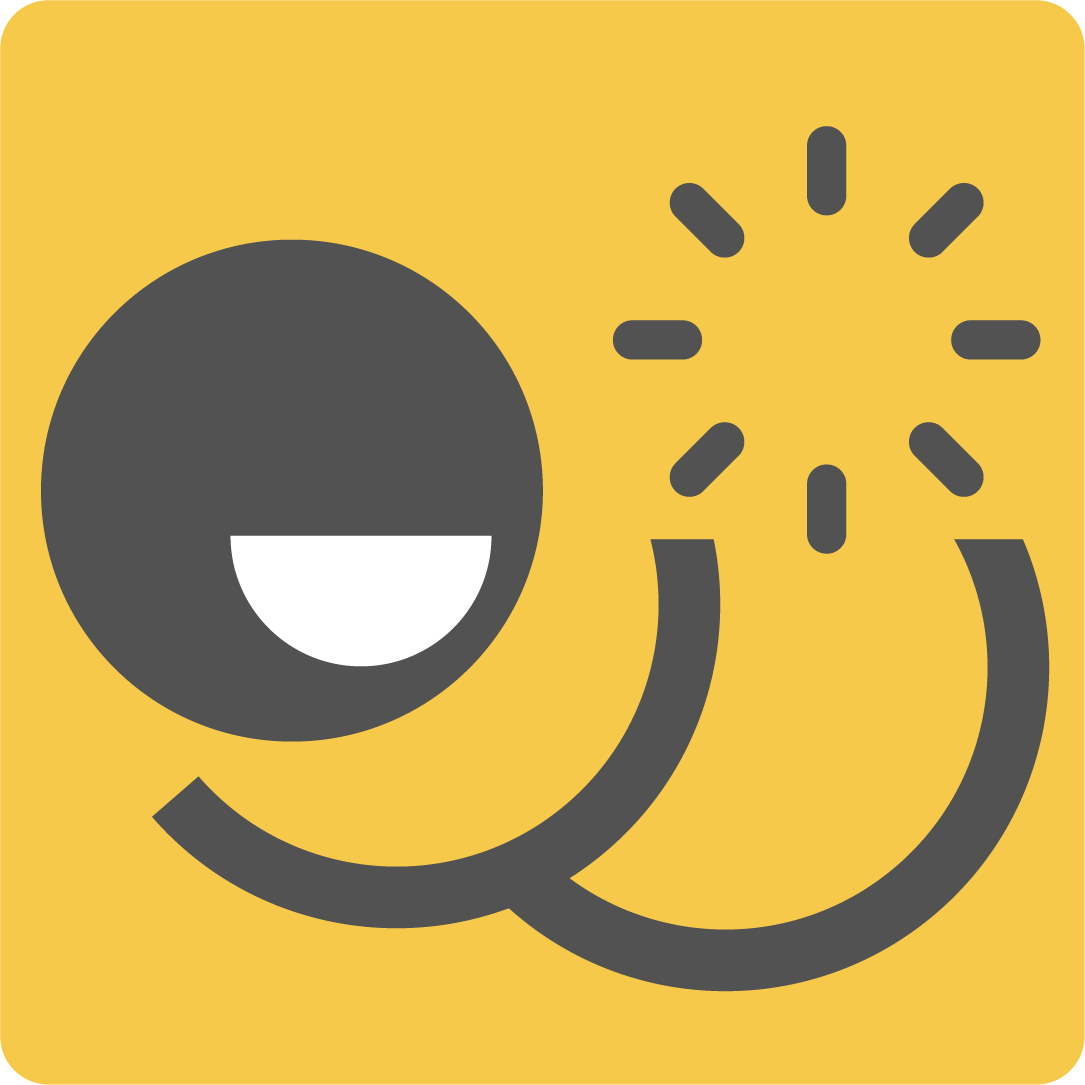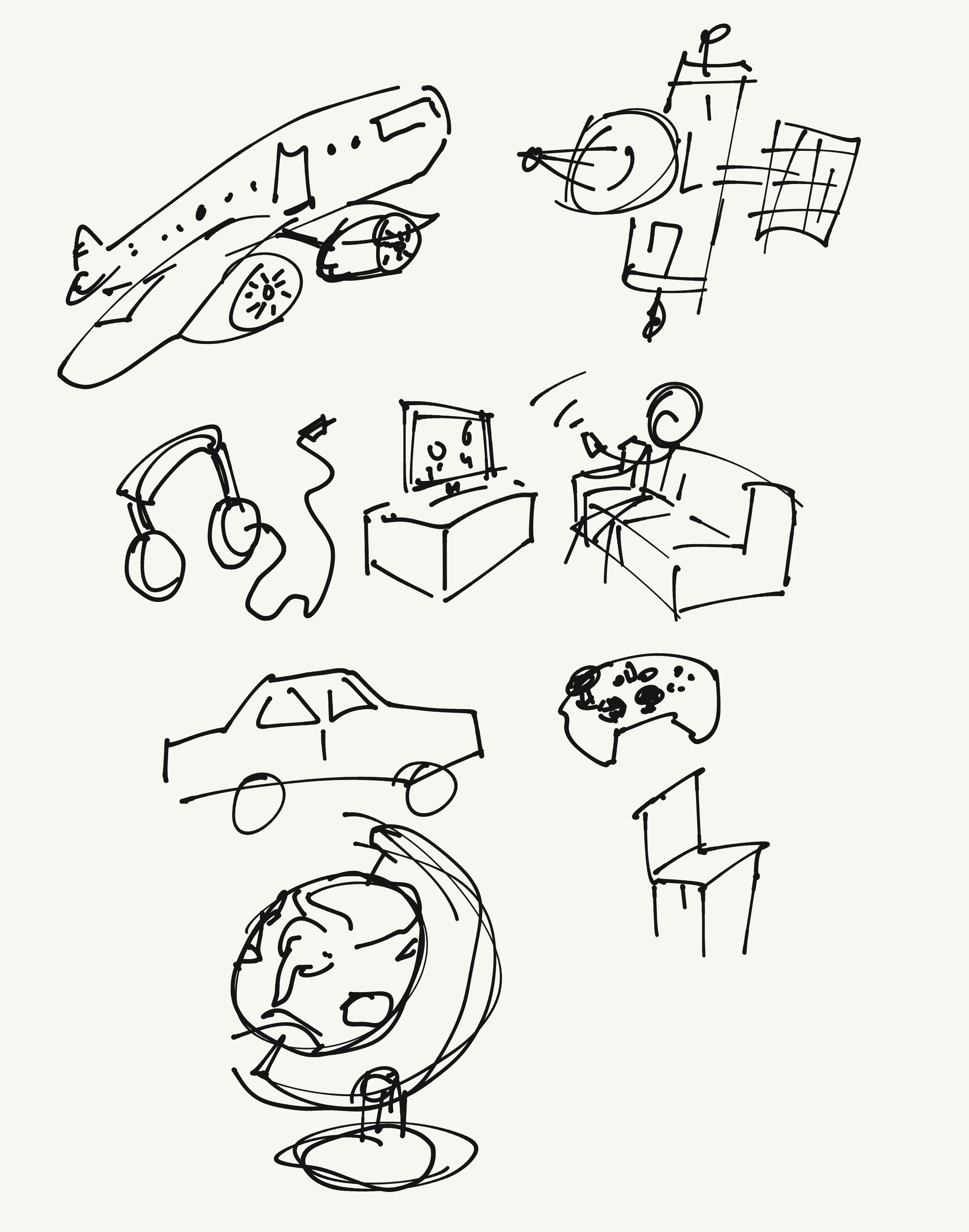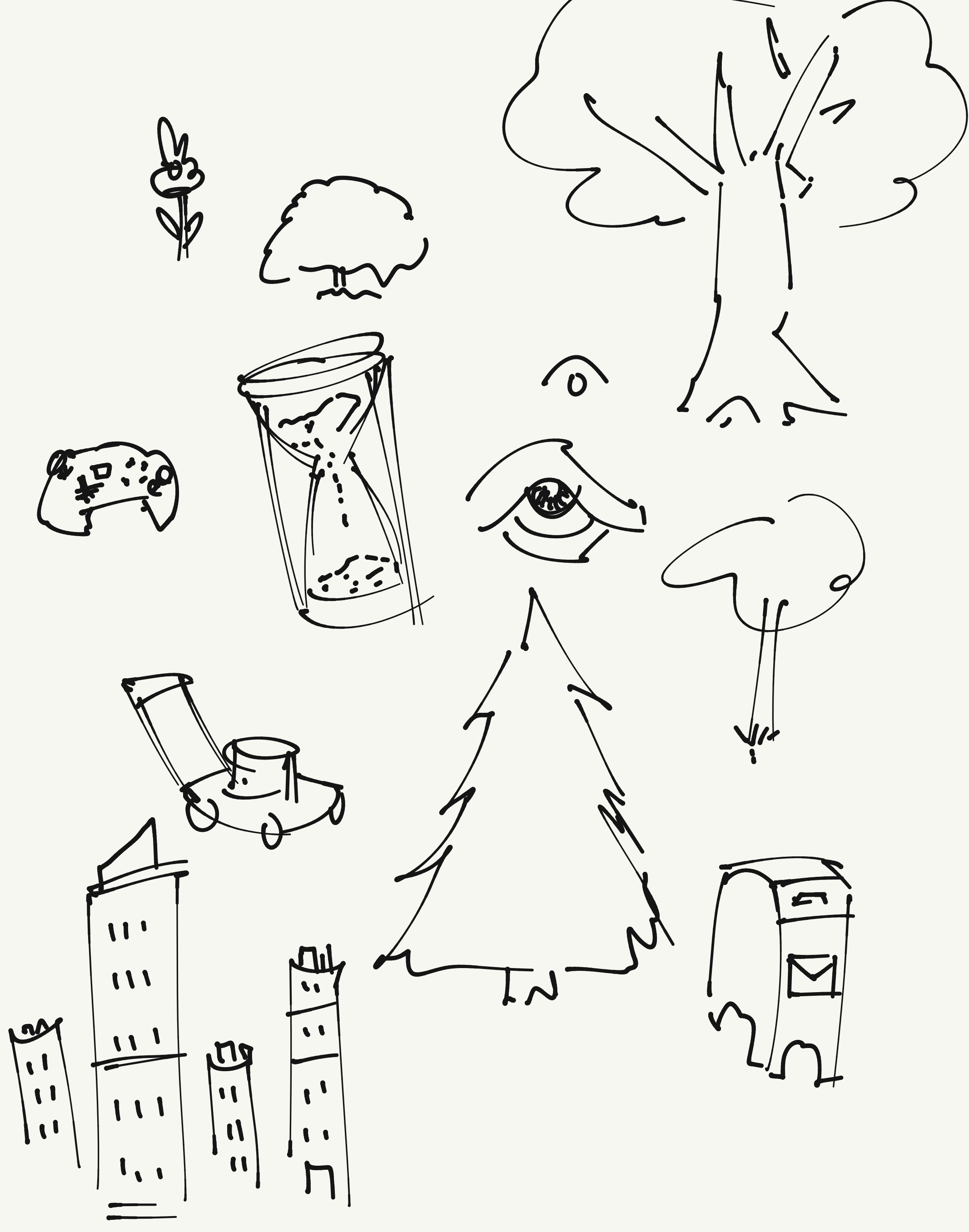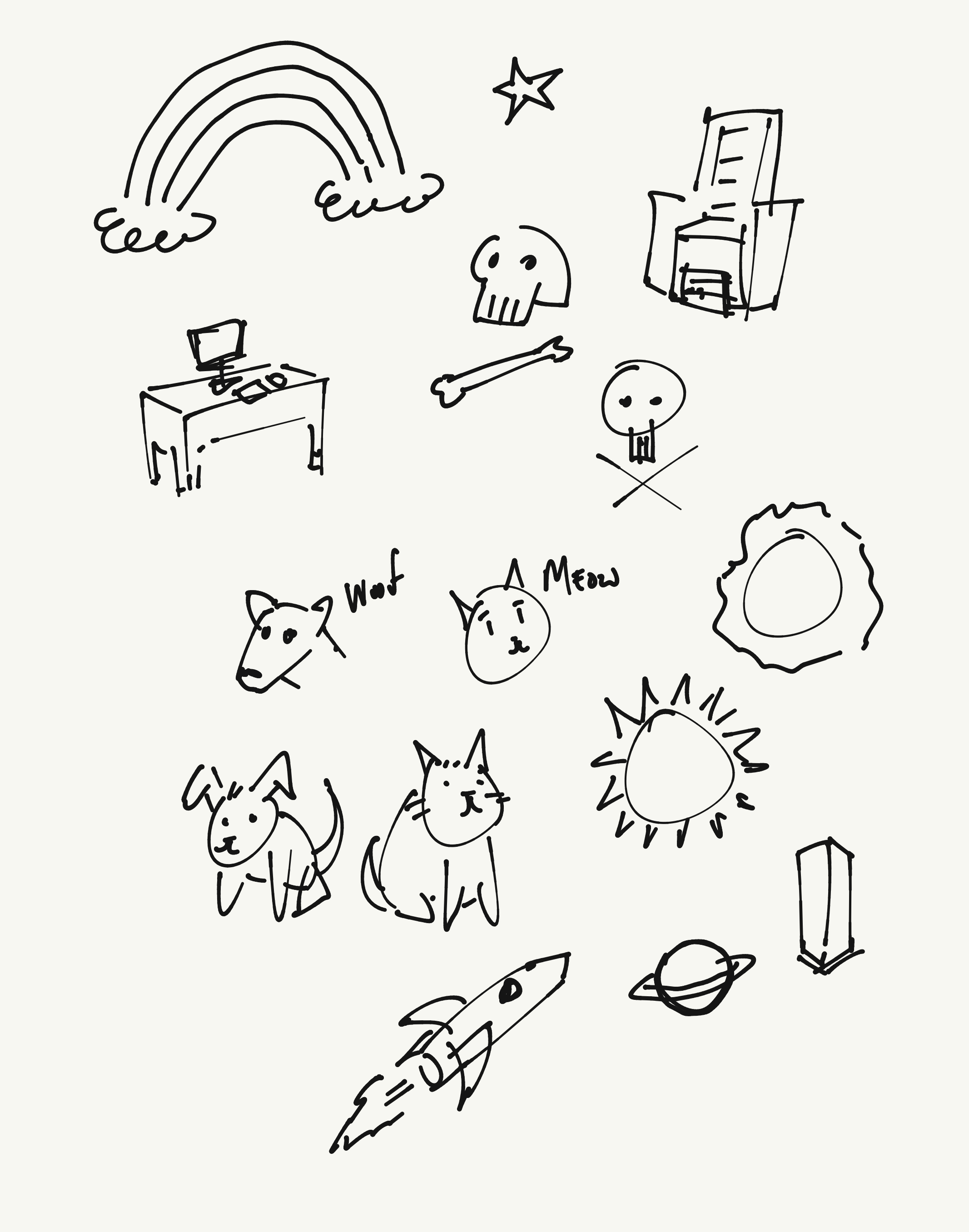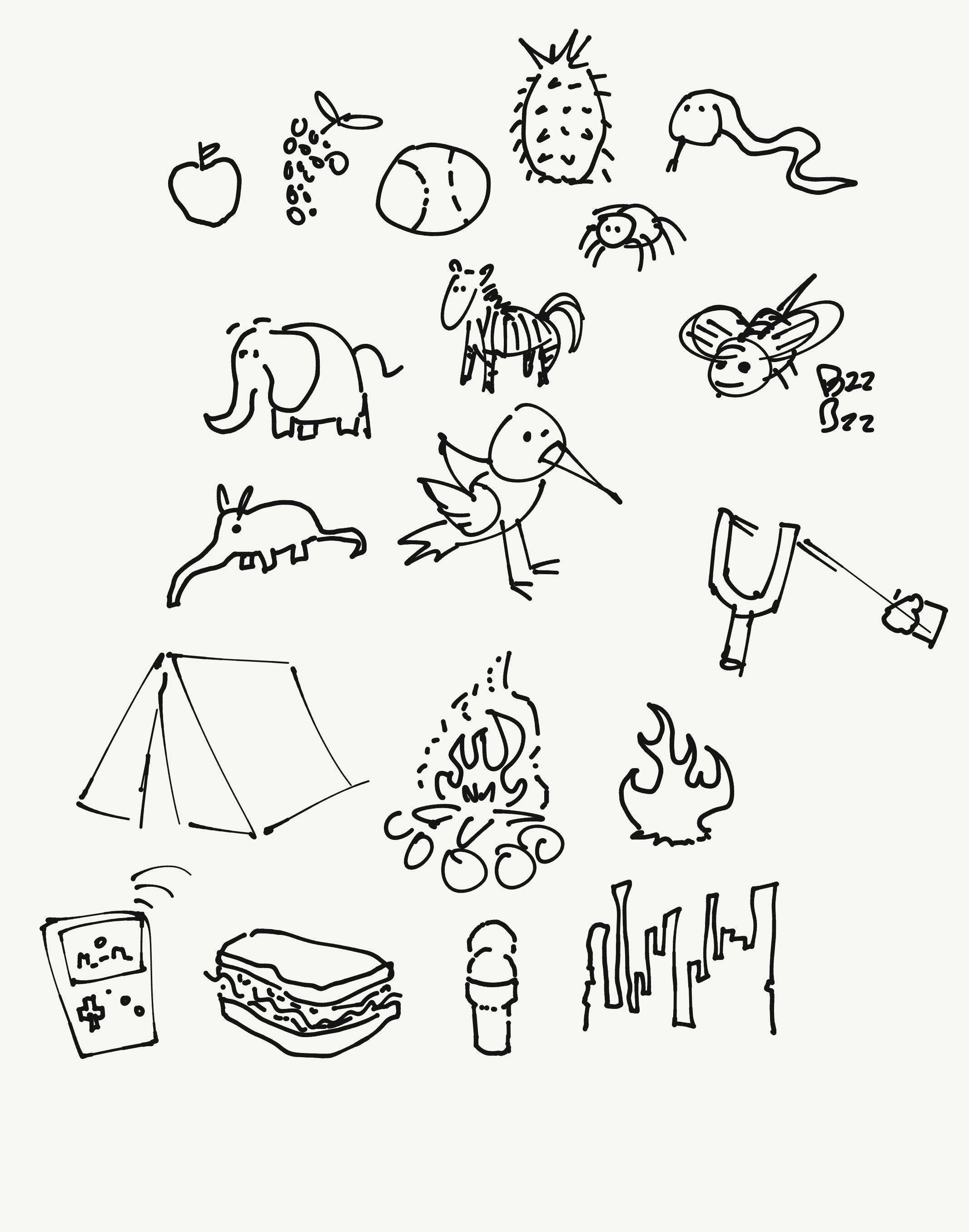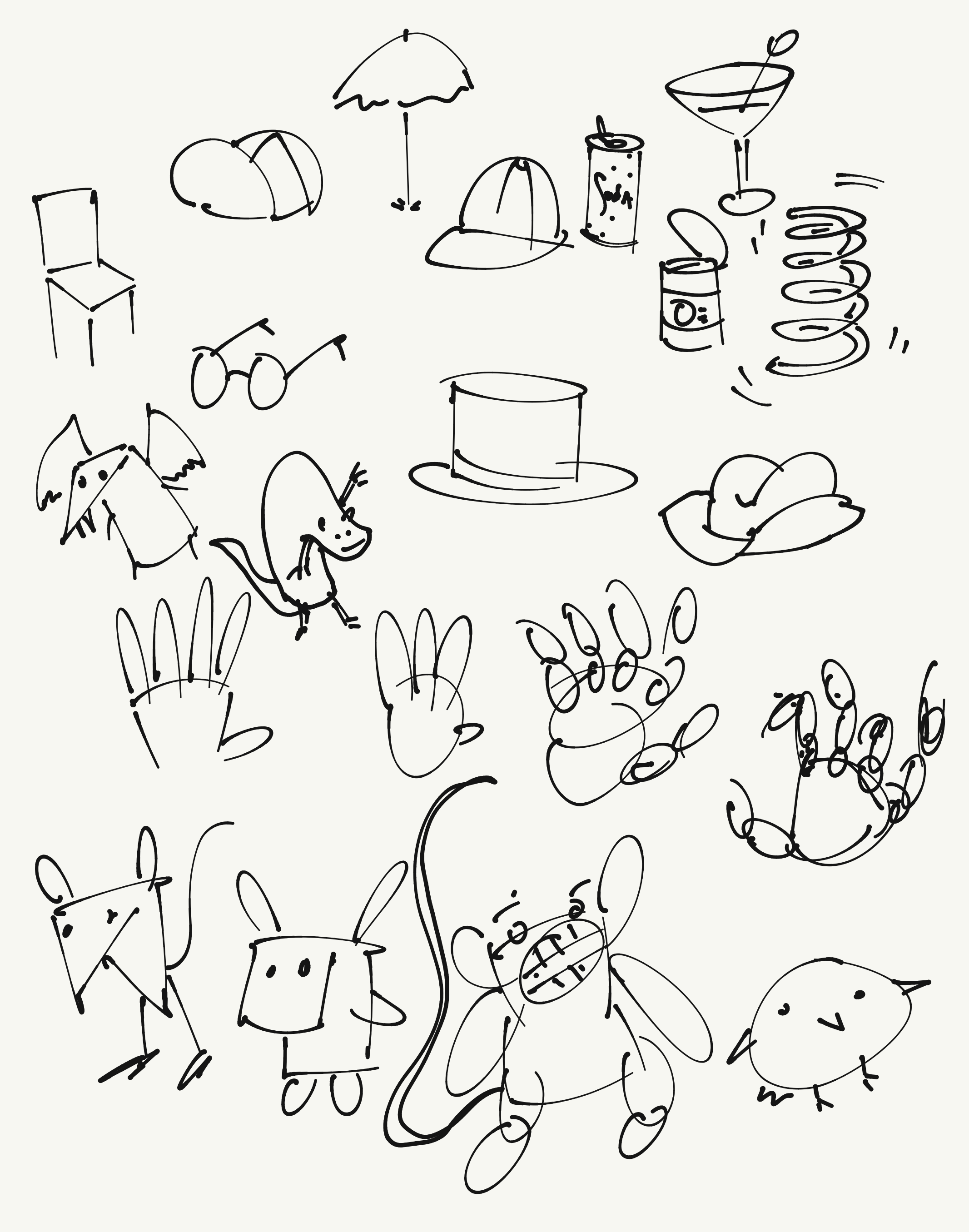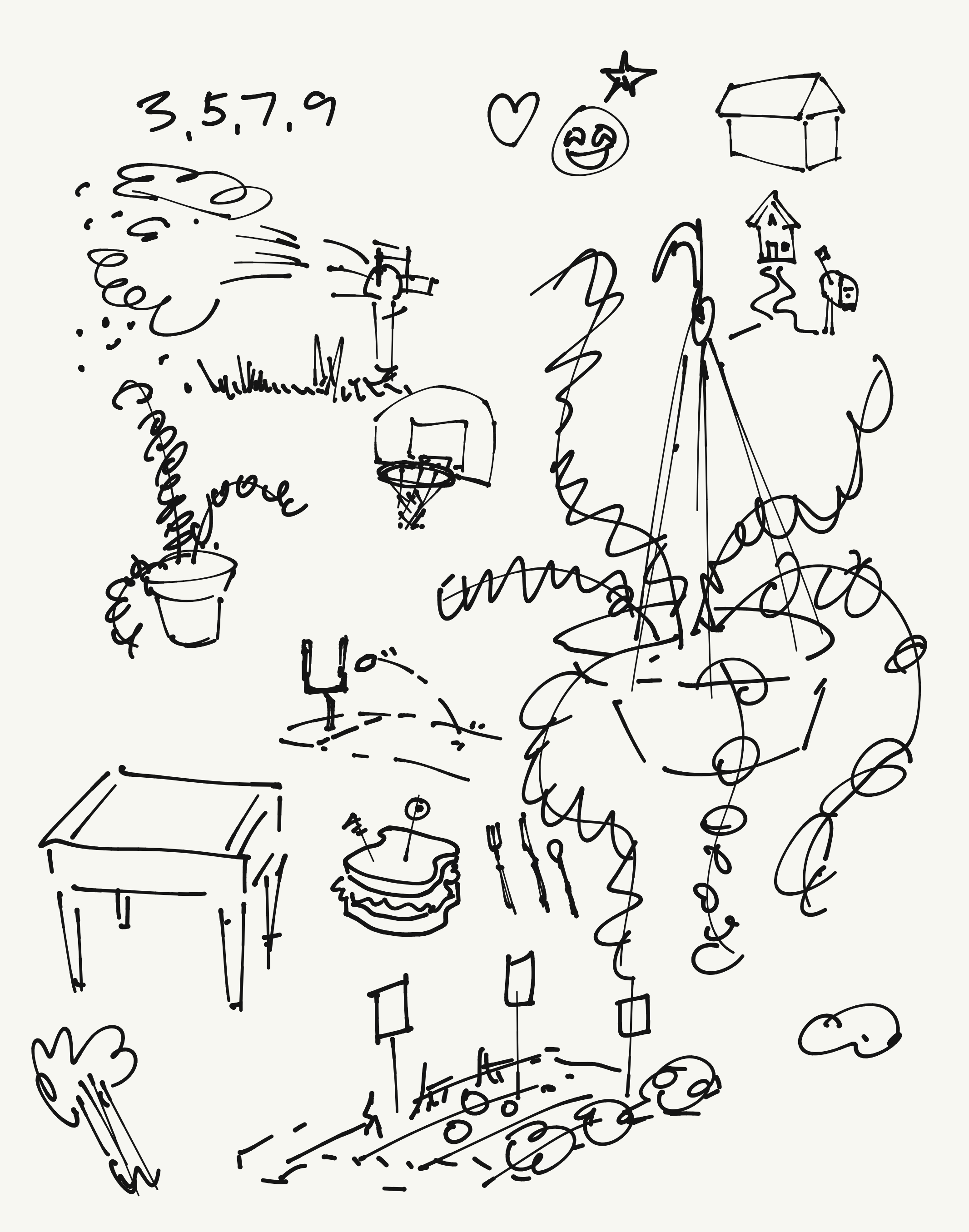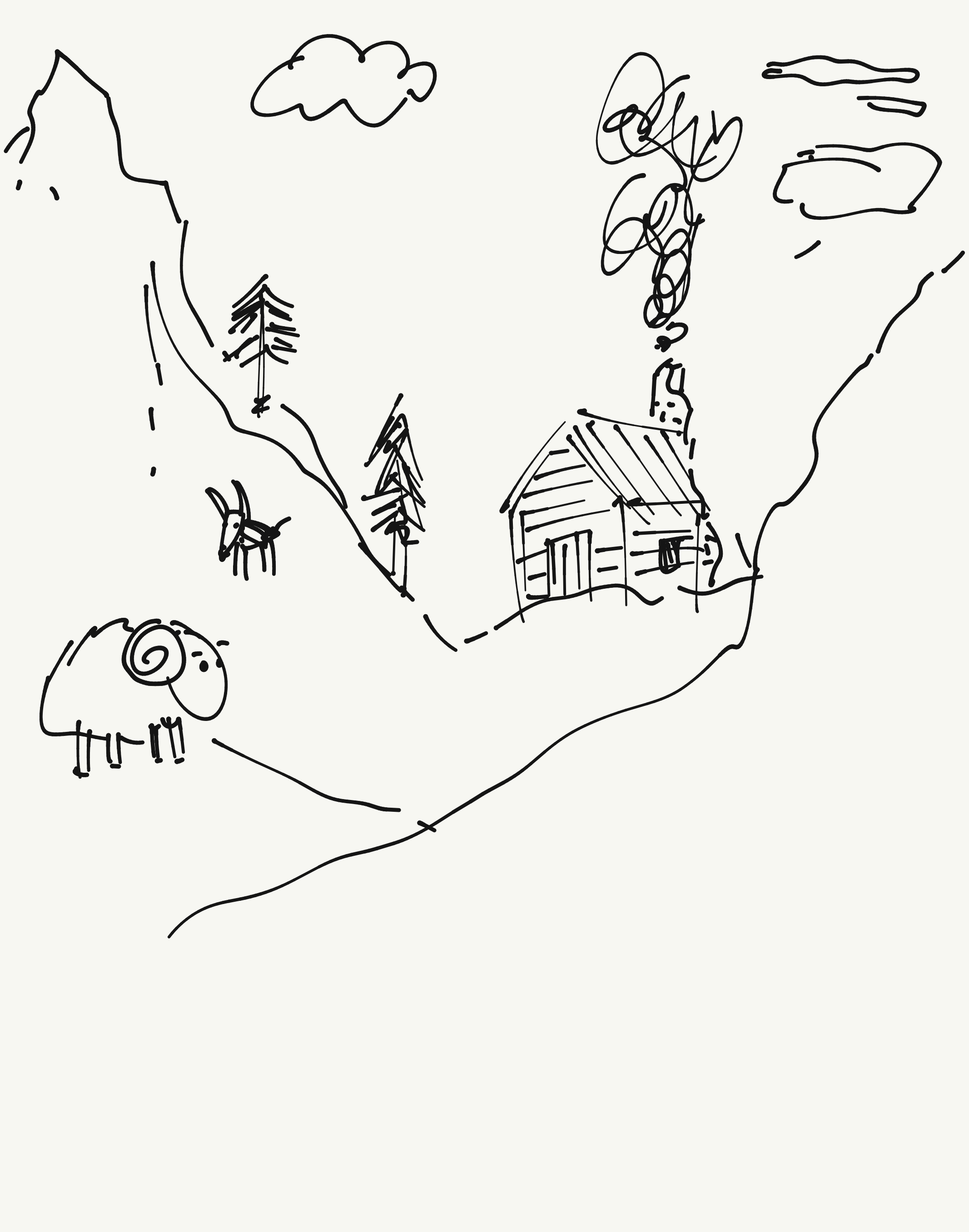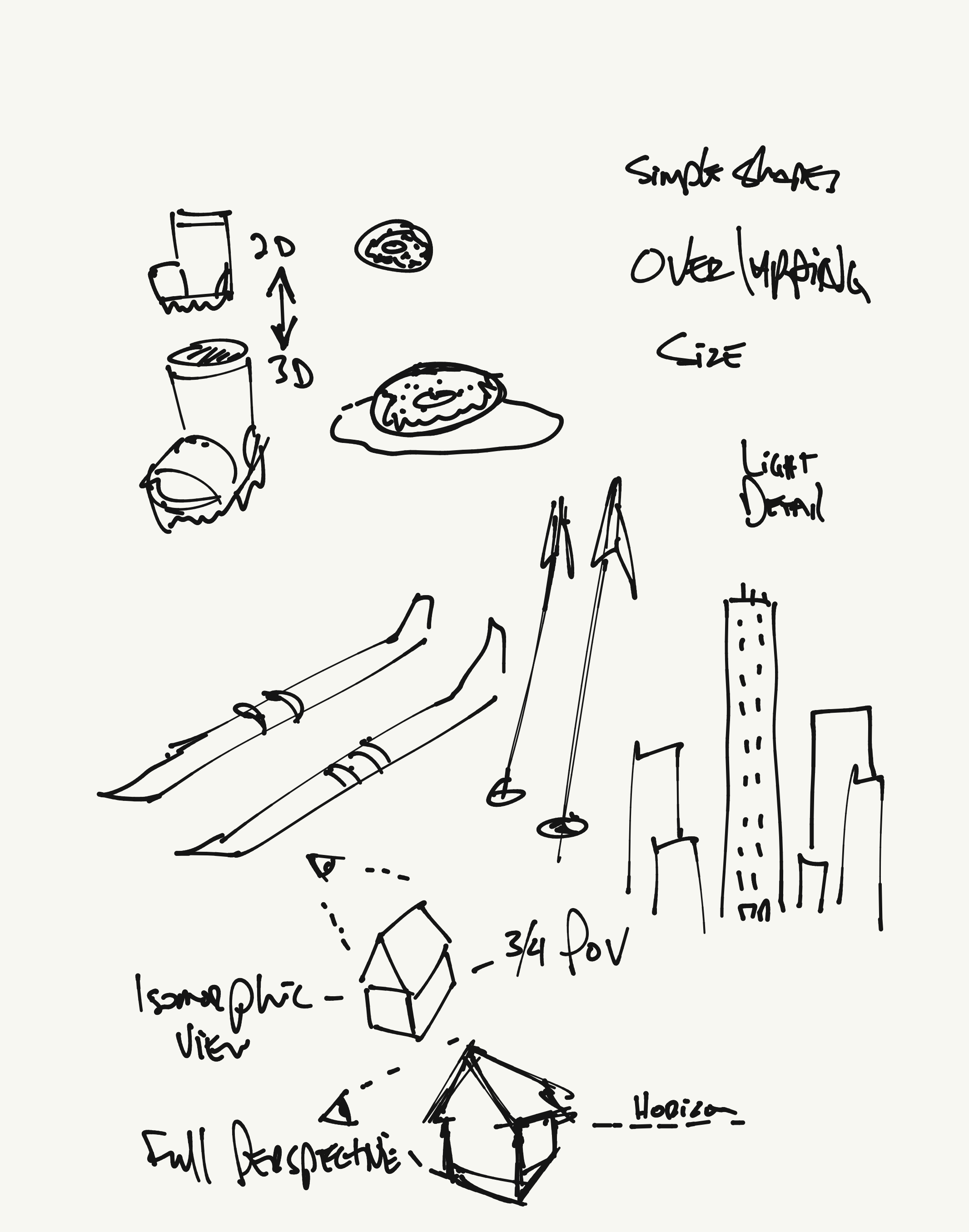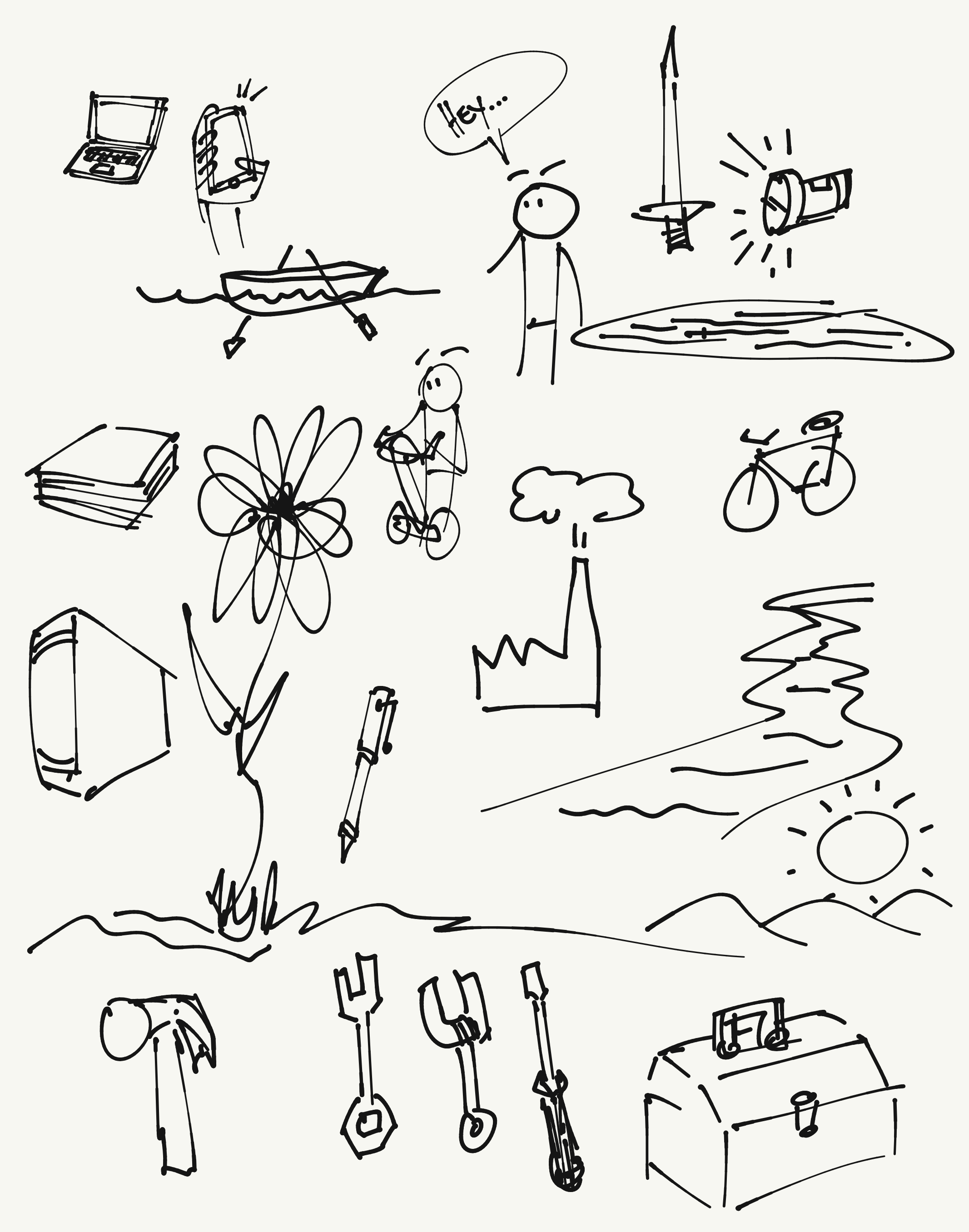Doodling practice session and visual note taking encouragement
Doodling vocabulary practice
This is an exercise that I'm sharing that I did a bit of a brainstorm, and it was pretty unstructured. I gathered a set of doodles to start to explore a variety of fast visualizations across a few themes and a variety of idea relationships.
Part of the practice session was about these questions:
- What symbols come to mind when I sketch fast?
- How might they be helpful in a visual facilitation situation.
- How might they serve adding a visual expression of ideas into documentation?
That was my plan going into this and I didn't come close to an exhaustive list of objects to draw.
Here's what I came up with plus the page of notes reflecting on the brainstorm. It's a mix of wanting to say things plus what I like to say already.
Simple shapes can do a lot
Notice how these doodles are based on simples shapes made loosely of dots, lines, circles, squares, and squiggles. These building blocks plus getting ideas and relationships put to the page add up to communicating all kinds of ideas.
Context can help clarity
What comes out in some examples is clear enough and others are easy to misunderstand. Someone else might think I sketched a bear carrying groceries, jumbo squid, or salted boomerang, where I know I sketched a jumbo jet, a houseplant, and a game controller. Not every doodle will document something that's clear to everyone and that's okay. When you notice a doodle is confusing, put something next to it to clarify. Make the dog go "woof" or the tree might need squiggles of grass below to help clarify. Even better, add a simple shape stick person who's doing something that relates to what you doodled so far. Now you have a whole situation.
Different situations of doodle purpose and comfort
Getting started
Get yourself something to doodle with: pen and paper, a tablet note taking app, something that you can capture visual notes. Start with low pressure situations where you're doing the doodling for fun as part of watching a video or in a meeting with a large audience. In the last situation I recommend starting when you are in the audience instead of presenting. But if you're feeling up to it, doodle anywhere to get comfortable.
Reconnecting with an old doodling habit
Maybe you're confident in your past doodling and willingness to pick up a pen and make doodles part of your notes. But something between then and now changed and you're out of the habit. What about it did you find fun and useful? What do you have close at hand to get back into the habit? If you've stopped note taking in general, what can you carry with you that will make it an available option?
One tough situation is sometimes taking notes visually focuses attention on you. Are you in a learning/work/collaborative situation where nobody takes notes and certainly nobody else would be doodling?
Doodling for yourself
I draw even when I'm the only person who's going to see the notes. For me it helps with deep focus and helps me find questions to explore to learn more from the session or as something to investigate after.
Doodling to document with and for others
You're doing visual facilitation and scribing work which adds to the experience in the moment of what the group is making and for people who were part of the event it will help them retell their experience. For folks not part of the gathering, visual notes are a great conversation starter.
Are you in one of those doodling contexts?
Also: What helps you doodle? What holds you back from doodling?
Lofty doodling encouragement
Doodling is one of the skills you can build that gets your ideas out of your mind and into the shared world. Once your ideas are in the world they can communicate, be part of making things, and help you remember what matters. Also, the activity of doodling for some of us is a way to relate deeper with what's going on around us.
